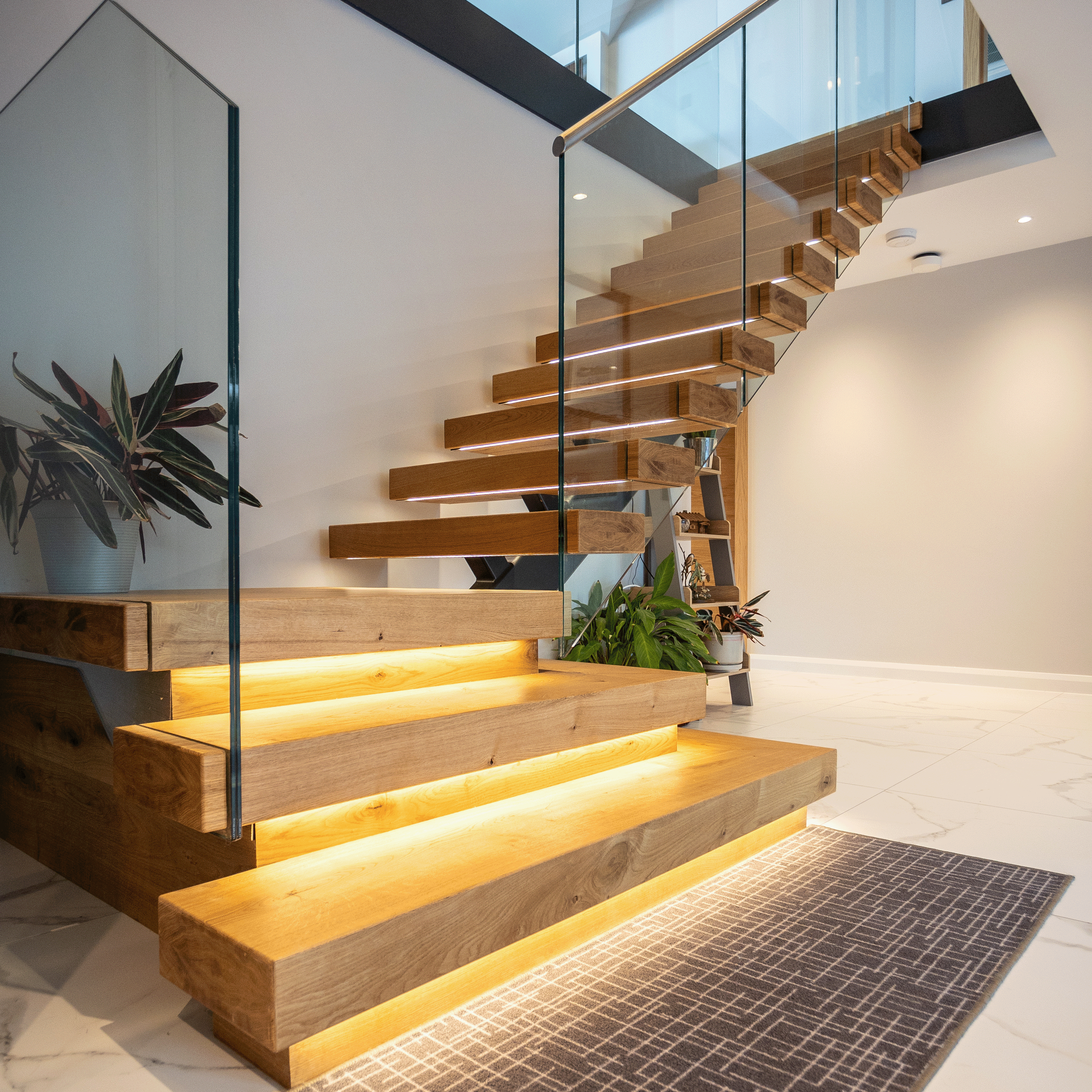




By Jody Warren, Architectural Design Manager
Architecture = art + engineering.
And that’s why I love it. One minute you’re sketching wild ideas, the next you’re navigating planning policy and site constraints to make your mad ideas actually buildable. Architecture scratches both my itches - the freedom to imagine and the discipline to deliver.
But I didn’t always see it like that. When I first started my career, I thought the end goal was to get planning approval. Back then, if a scheme got the green light, we’d cheer and feel pretty pleased with ourselves. But I’ve come to realise planning permission is just a piece of paper – it doesn’t guarantee a home that flows, delights, or feels good to live in.
That realisation changed everything.
A long time ago I stopped designing for planning and started designing for people.
And that meant breaking rules.
We’ve all been in homes where something just doesn’t work.
The hallway that forces you into a sideways shuffle.
A kitchen that’s “open plan” but actually feels like a thoroughfare.
A door that bangs against a bed. Or a window that ignores the best view.
These things aren’t accidents. They’re the result of designing to minimums or playing it safe, instead of questioning how you move through the space.
For me the secret to a great house is flow.
I talk a lot about flow – how you circulate through a home, how one space connects to the next. And in too many plans, it’s overlooked.
Example: one of our clients, a skilled builder with a young family came in with a plan for a sensible rectangle and a list of rooms. We could have designed his family home to his specifications, but where’s the heart of the house, where’s the flow?
Instead of a long corridor with identical doors either side, we gave him an entranceway that draws you in with glimpses of rooms, a staircase you want to climb, and a straight view through to the garden. It doesn’t just look better, it feels and works better too - the space feels welcoming and inviting, and the owner loves it.
That’s what happens when you design around a family and ditch the rules that don’t serve real life.
Everyday Rebellions
There are a few rules we like breaking, not for the sake of it but because it works for the people living there.
- We’ve widened staircases so you can carry a laundry basket without bruising your elbows.
- We’ve added stair treads to make them easier to climb (and to shift that massive sofa upstairs).
- We’ve made hallways wider than the 'minimum,' so families don’t bump and grumble their way past each other.
And storage? Don’t get me started! Most building guidelines say you need about 3m² of storage for a typical four-bedroom house. I say: triple it!
How You Can Break Rules Too
You don’t need an architecture degree to question convention. Just start with better questions:
- Instead of 'Where should the kitchen go?' ask 'What view do I want when I cook?'
- Instead of 'Do I have enough rooms?' ask 'Could these rooms flex as my life changes?'
Here are a few more rebel moves anyone can try:
Prioritise your passions: Love entertaining? Wine? Oversize the thing you love most. It gives your home its personality.
Challenge assumptions: Do rooms really need to be boxed off? Could circulation flow differently if you flipped the plan?
Prototype at home: Architects make models; you can do it with masking tape. Mark zones on the floor, shift furniture, imagine three generations living in your house. What works? What doesn’t?
Look for effortlessness: If a space feels clunky, keep tweaking until it feels natural. Effortless design usually comes after a lot of iteration.
Rules we do respect.
Not all rules are bad. We respect context - the site, the view, the trees, the way cars swing onto the drive. We respect the future - designing in space for lifts, storage, and family growth. And we respect you - your quirks, your pizza ovens, your wine cellars, your dogs that need a shower*
*These are all examples of design features we’ve built into schemes
If you just want a safe set of plans, we’re not your people. (We’re not very good at playing it safe)
But if you want to see two concepts on the table, both better than you imagined and a home that feels alive and flows beautifully – lets talk.


